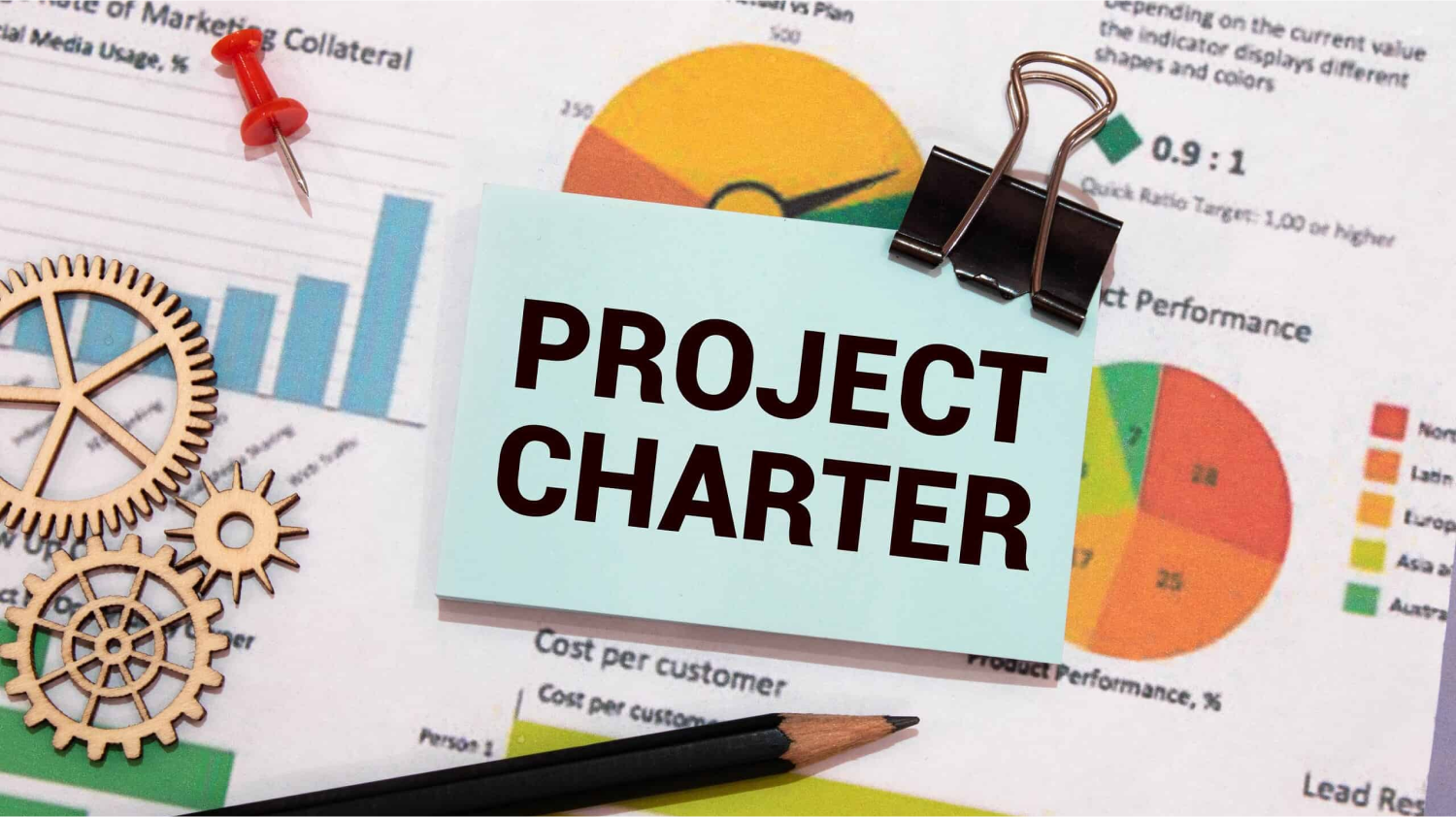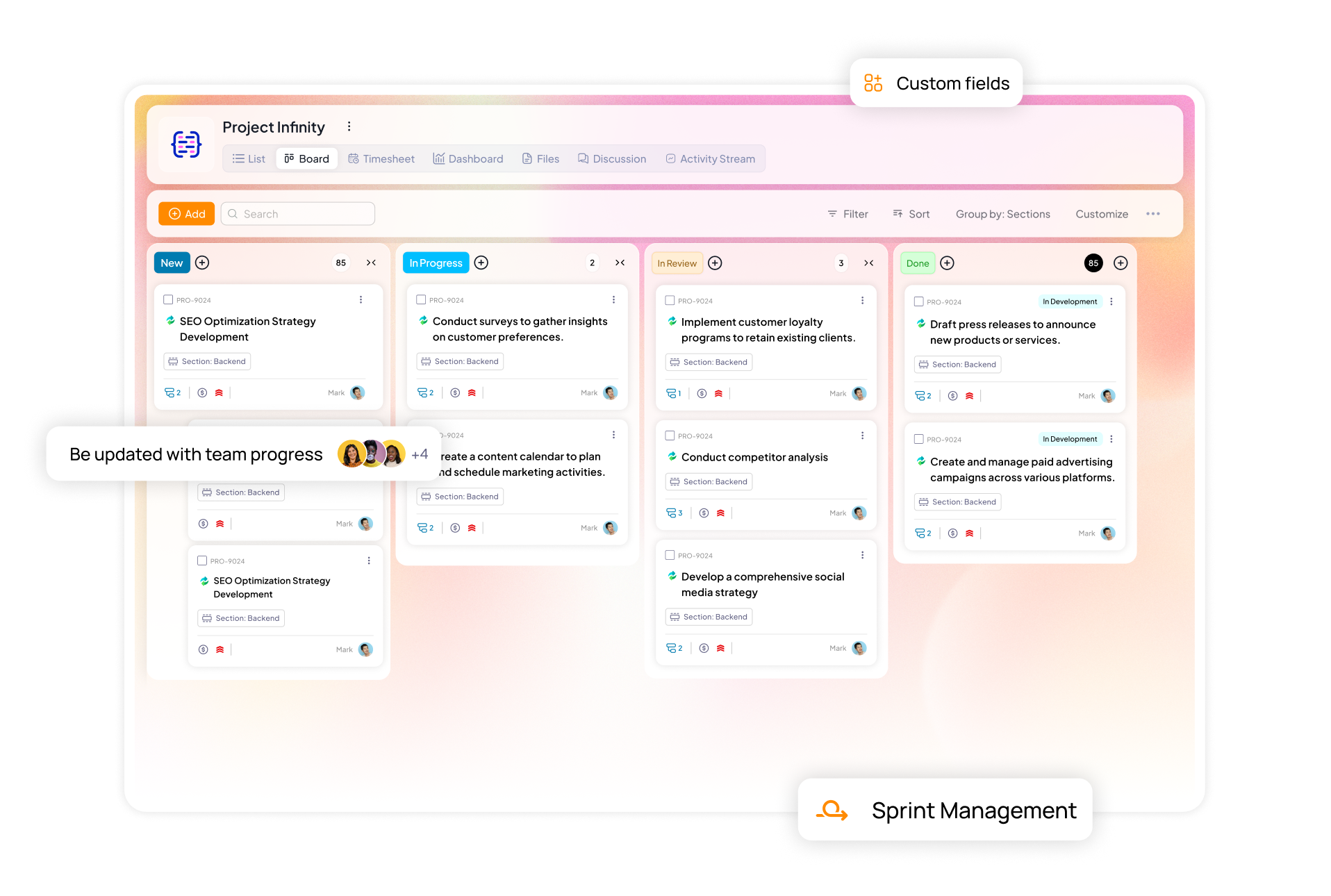Projects need resources. To get those resources, project managers need a project charter.
Starting a new project can be an exciting process for project managers. They get to swoop in with fresh ideas, new ways to execute tasks and reach higher goals. But before the execution of any project plans, PMs need to assemble stakeholders, get proper resources, and plan their process.
Pitching a project for approval can feel intimidating, especially if you have never done it before. Collecting all the right information and presenting it in a structural & logical way can give you all the things you need to succeed. This is where a project charter comes into play.
In this blog, we discuss what is a project charter, the difference between a project charter and a project plan, and the 3 main parts you need in a project charter. Let’s begin.
What is A Project Charter?
A project charter is a short, formal, and insightful document that provides key details for any project. It is essentially a pitch covering all the important questions potential stakeholders may have before they agree to invest their time, finances, and other resources in your project.
This formal document should give a clear idea to the stakeholders involved about your project’s purpose, mission and how it will support your business goals. It is a chance to prove your project’s viability and necessity to them.
Now that we know what a project charter is, let’s look at some important elements that make up a charter.
3 Main Parts of a Project Charter
Writing a project charter is not a complicated task, if done keeping in mind its main elements. There are 3 main parts that make up a clear and concise charter. They are:
1. Addressing the Why
When pitching a project, the very first question many PMs get is “Why?” Why do you want to initiate this project?
A good project charter should, first and foremost, address this why. It should clearly share the purpose of the project and what it aims to accomplish. Define the objectives and what makes this project so important. Mention in detail the way in which this project can support the company goals.
Many project managers swear by the S.M.A.R.T methodology to create strong frameworks that answer the stakeholders’ questions. The abbreviation is for creating objectives that are:
- Specific
- Measurable
- Achievable
- Reliable
- Time-Bound
Following this method can give you a clearly framed answer to the why.
2. Explaining the What
After nailing down why you want to initiate the project, it is now time to explain what it aims to accomplish and how. This section is a clear and to-the-point explanation of what actions will be taken under the project i.e. the scope of the project.
Here, project managers need to explain how resources by stakeholders can help them achieve the set goals. This also means drawing boundaries around what actions will not be taken under this project to ensure its timely accomplishment.
Including the what and the how of a project solidifies the stakeholders’ trust in your vision.
3. Detailing the Who
Many times, even if your project objective and plan are clear, the project charter may get rejected. Why? Because you have not recruited the correct people to complete the project delivery.
One of the most important aspects of accomplishing and project is to find the right professional fit. In the final section of a project charter, give a detailed explanation of who will be involved in the project.
This includes:
- Key Project Stakeholders
- General Team
- Executive Stakeholders
- Project Sponsors
- Outside Contractors
Pro tip: You can develop a resource management plan on a work management platform to keep track of all these metrics and form a clear and precise charter.
Project Charter v/s Project Plan
The difference between a project charter and a project plan can be difficult to understand for new project managers. And although these two documents share some similarities, they have starkly different purposes.
A well-drafted project charter is an overview that defines the key terms of a project, along with information such as its purpose and stakeholder involvement. It offers logical boundaries within which your project team operates to achieve a successful completion.
A project plan, on the other hand, is like a tactical outline that offers a detailed explanation of how your team will execute the project on a practical level. A project plan has a bigger emphasis on specific action points each team will perform, detailed processes, and divided workflows that will guide your project to completion.
Wrapping Up
While it may seem intimidating to create a project charter, you can make a detailed document with little time and effort. With this document in your system, you can ensure that your entire team is aligned and working towards the collective goal of the company. You can also keep the document available for the stakeholder on a work management platform like 5day.io, where they can refer to it alongside seeing the project in action.






